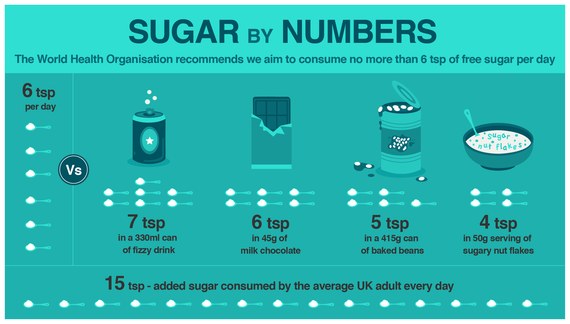Malnutrition in children is defined as the outcome of insufficient food intake. There are two types of malnutrition:
1. Protein-energy malnutrition (PEM) - Inadequate intake of calories and essential amino acids, leading to growth failure (wasting and/or stunting).
2. Micronutrient deficiency - Inadequate intake of vitamins and minerals.
Approximately half of all deaths in children under 5 globally are attributable to malnutrition (3 million lives each year!). It is estimated that 17.6% of children worldwide are underweight in 2015. This problem is not limited to developing countries either: despite being one of the world's richest countries, it is estimated that well over half a million children in the UK are living in families who cannot afford to provide them with an adequate diet! The cost of food in this country has increased dramatically in recent years and the gap between the rich and the poor is larger than ever.
Malnourished children are far more susceptible to illness and disease. They are also likely to experience issues in both cognitive and physical development. However it is not just this underfeeding (PEM) that is causing problems. Many children suffer more from specific micronutrient deficiencies which can have quite severe health consequences. This problem is compounded by the fact that good quality, nutrient-dense food is so much more expensive than processed rubbish. The cost of fresh, good quality meats and vegetables is astronomical when compared to that of ready meals and fast food.
It is not just money (or lack of) that is forcing children to eat in a way that is detrimental to their health. People make poor choices in general when it comes to food for their families. The modern diet, full of refined carbohydrates, hydrogenated vegetable oils and sugar, can in itself cause problems. This is evidenced by the worrying rise in obesity, type 2 diabetes and mental health problems in school-aged children.
Children consume far too much sugar, in the form of sweeteners added to processed and prepared foods and beverages, and too many trans fatty acids, in the form of hydrogenated oils in poor quality commercial foods. Their diets are also commonly deficient in key micronutrients for brain development (such as vitamin A, vitamin D, zinc and choline).

Here are some simple dietary modifications that would considerably improve a child's chance to be healthy and realise their potential:
1.Dilute, reduce or eliminate juice and squash consumption.
2.Stop the consumption of sugar-laden breakfast cereals (you would probably get more quality nutrients by eating the cardboard box it comes in, without the type 2 diabetes!).
3.Replace vegetable oil and trans fats with traditional fats such as butter, olive oil and coconut oil.
4.Cut down on or eliminate processed convenience foods.
5.Introduce sweet-tasting fruits and berries (eaten whole, not as juice or smoothies).
6.Ensure they are regularly eating nutrient-dense foods.
Expanding upon point 6, here are some key nutrients for growth and development and where to find them:
Protein - Meat, fish, eggs, nuts, seeds, dairy
Fat - Whole milk, butter, eggs, olive oil, avocado, oily fish, red meat, walnuts, flaxseed
Iron - Eggs, beef, chicken, fish, green leafy vegetables, bone broth, sardines, turkey
Zinc - Full fat yoghurt, almonds, cashews, beef, bone broth, spinach, cocoa
Vitamin A - Green vegetables, carrots, mango, papaya, cod liver oil, sweet potato, melon
Vitamin D - Salmon, tuna, sardines, whole milk, eggs, Portobello mushrooms
Choline - Eggs, cocoa, salmon, prawns, organ meat, beef, turkey